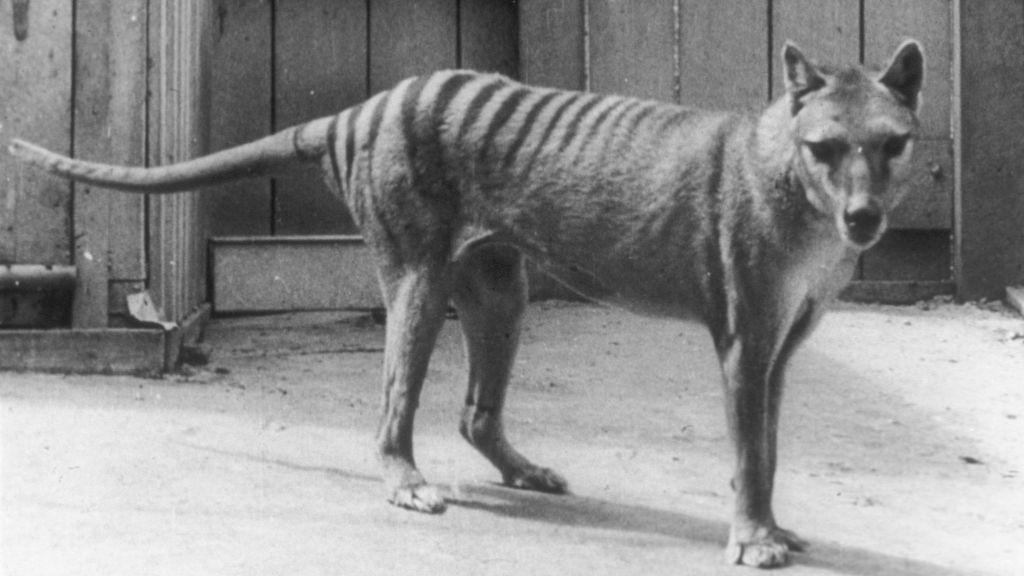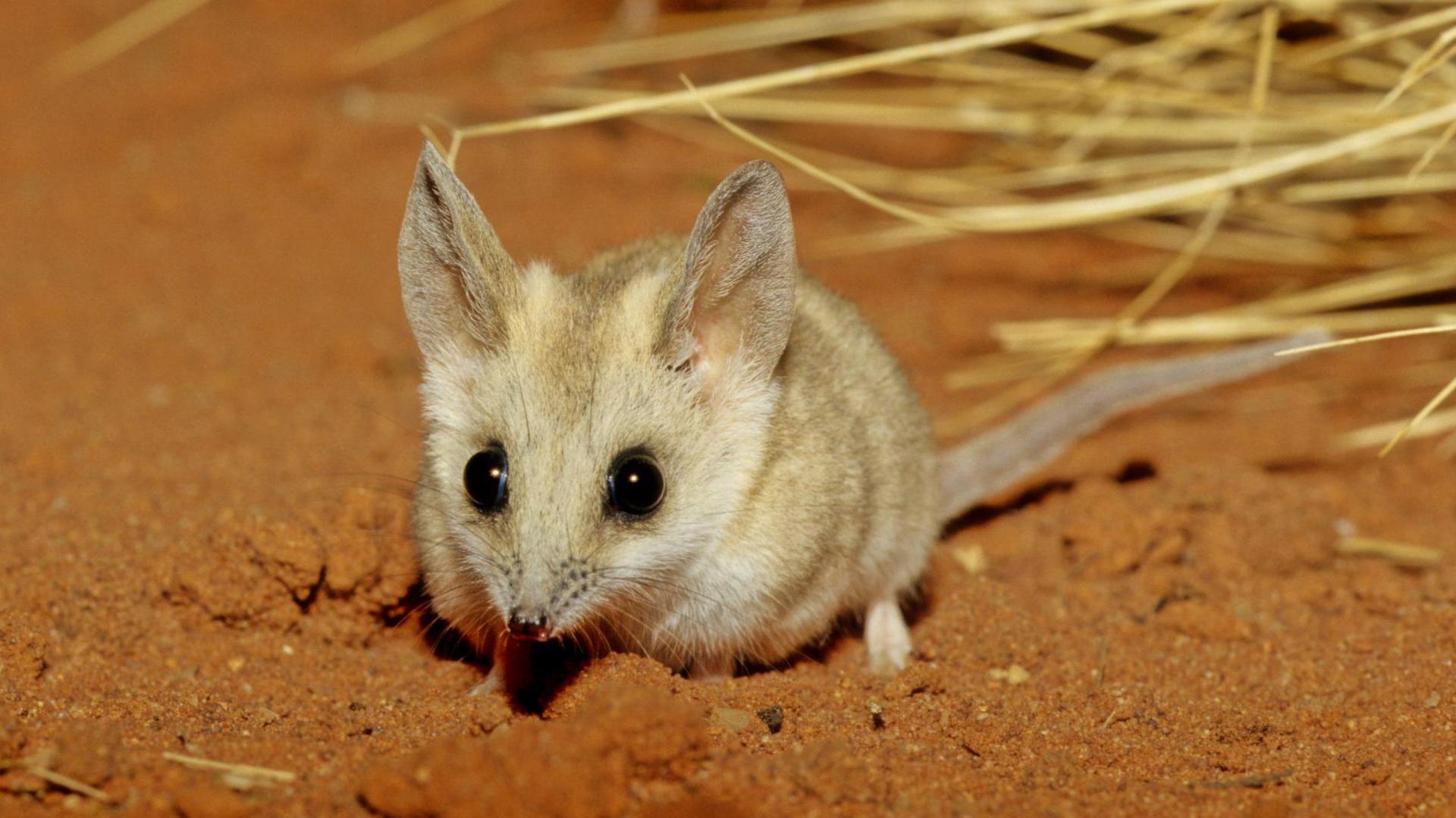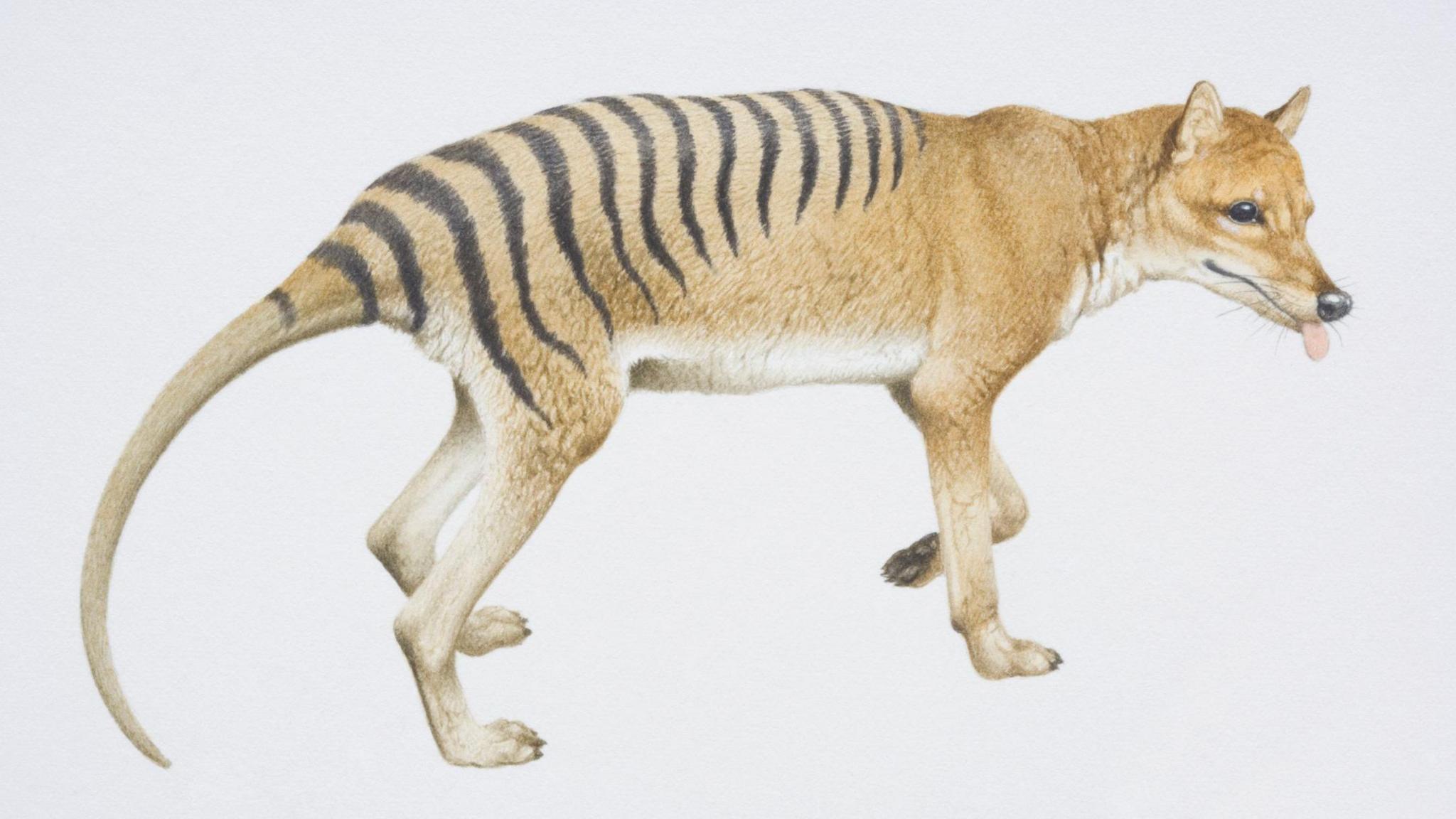Could the Tasmanian tiger come back from extinction?

Could we see Tasmanian tigers again in around five years time?
- Published
A team of scientists from Australia and the US say they've had an exciting breakthrough in trying to bring back the Tasmanian tiger from extinction.
The tiger, also known as Thylacine, was a wolf-like carnivorous marsupial, about the size of a large dog, who once used to roam the forests of Australia, New Guinea and Tasmania.
However, the last known Tasmanian tiger died in Hobart zoo in 1936, with the rest of the species hunted to extinction.
Now a US science company called Colossal, who are also trying to bring back the Woolly mammoth and Dodo from extinction, have teamed up with Australian scientists from the University of Melbourne to try to find a way to bring the Tasmanian tiger back.
Scientists plan to bring extinct 'tiger' back to life!
- Published18 August 2022
Could woolly mammoths come back from extinction?
- Published15 September 2021
Bringing back extinct animals may be impossible, say scientists
- Published11 March 2022
What progress have the scientists made?

Scientists at Colossal are working with scientists in Australia to help bring back the Tasmanian tiger
The team of scientists are using DNA and gene-editing techniques to try to create an animal that is as close to a Tasmanian tiger as possible.
DNA is a big list of information inside the cells in our bodies, that makes people, plants and animals who they are, a bit like a blueprint - the information includes things like what colour eyes or hair you might have, or how tall you are.
The scientists said they had a really exciting breakthrough when they discovered part of a Tasmanian tiger, which had been preserved for around 108 years, in a museum.
From this they were able to take a very high-quality sample of the animal's DNA and RNA molecules - which is similar to DNA, but is made of a single strand of information, instead of a double, making it more fragile.

Could the fat-tailed dunnart helps scientists to bring back the Tasmanian tiger, using it's DNA?
The scientists are excited because the samples are only missing around 45 pieces of information, out of around three billion pieces in total - giving them a far more complete 'blueprint' to help make the Tasmanian Tiger.
Andrew Pask, who leads the Thylacine research lab at Melbourne University said this is a "major leap forwards".
The scientists will then use gene-editing techniques, to take the cells of animals that exist today who have very similar DNA to the Tasmanian tiger, to fill in the missing information gaps.
The scientists say the process could take around three-five years, and also say they know that the new creature would not be 100% a Tasmanian tiger, but would be "more than 99.9-per-cent accurate" according to Andrew.
But other scientists and conservationists say they don't agree with the idea of bringing back animals from extinction, and that money could be better used to help animals who are at risk of extinction today.
They are also worried about how the creatures might affect the ecosystem - the balance of nature - if they are released into the wild.
What was the Tasmanian Tiger like?

The thylacine earned the nickname of the Tasmanian tiger for the stripes that ran along its back - but it wasn't actually a tiger!
The animal was actually a marsupial, which is the type of Australian mammal that raises its young in a pouch.
Both male and female Tasmanian tigers had pouches. The female pouch was used to look after their young in a similar way to kangaroos, whilst the male pouches helped protect their private parts.
Tasmanian tigers were quite similar to wolves or dogs in appearance, with short, sandy or yellowish fur, short pointy ears, a powerful jaw and a long stiff tail.
The thylacine was carnivorous, which means it ate other animals including wallabies and kangaroos.
